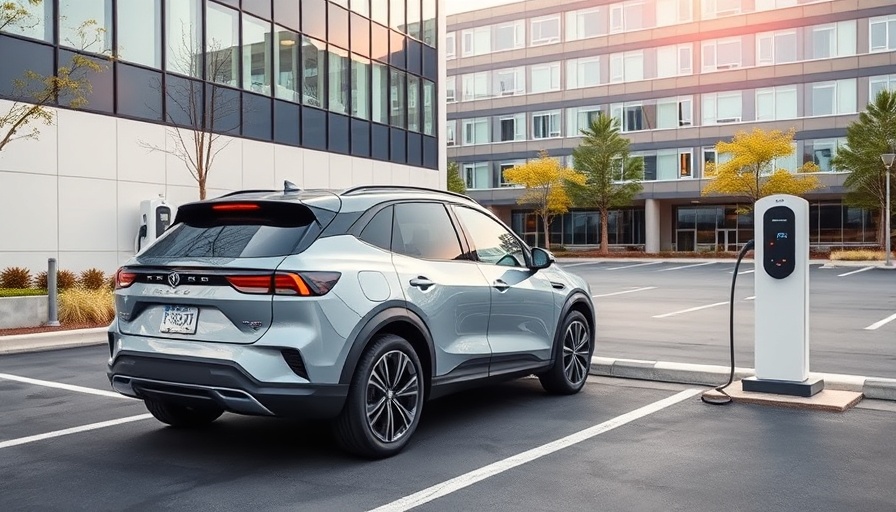
Transforming Healthcare Facilities: The Case for EV Charging Infrastructure
The rapid growth of electric vehicles (EVs) offers a promising glimpse into a sustainable future, but for healthcare facilities, the retrofitting process to accommodate charging stations represents both a challenge and an opportunity. As more patients and staff choose EVs, healthcare providers face the necessity of integrating these essential infrastructures to maintain service quality and fulfill environmental commitments.
The Hidden Costs and Key Challenges in Retrofitting
Health facilities often confront unique hurdles in their quest to implement EV charging stations. For starters, upgrading the electrical systems and assessing load capacity can lead to considerable costs. A recent discussion with manufacturers highlighted that while there are many workable solutions to these challenges, facilities managers must strategically navigate issues such as compliance with local accessibility codes and environmental regulations.
For instance, Jenifer Yokley, CMO of Blink Charging, pointed out that finding adequate space often poses a challenge, especially in densely populated healthcare settings. With parking often at a premium, finding a suitable location for chargers requires thoughtful consideration and planning.
Choosing the Right Type of Charger for Healthcare Needs
When it comes to the selection of charging stations, facilities managers must weigh options carefully, considering both the speed of charging and the infrastructure capability. Level 2 chargers provide a slower but steady charge, while DC fast chargers deliver power quickly, catering to the needs of busy healthcare environments where time is often of the essence.
Coordination with electrical engineers becomes essential, as they can offer insights into seamless integration into existing systems while determining which charger types best suit the facility's operational dynamics.
Enhancing Accessibility and User Experience
The strategic placement of charging stations is also vital. Healthcare facilities must ensure these stations are accessible yet do not disrupt traffic flow. Proper signage will help guide EV drivers, reducing confusion and contributing to a well-organized parking experience. By prioritizing user accessibility, healthcare providers can enhance overall patient and staff satisfaction.
Maintenance and Long-term Support: Keys to Success
The installation of EV charging infrastructure is just the first step. Long-term success hinges on ongoing software and maintenance support. Healthcare providers need to establish systems that ensure reliability and ease of use over time, creating a sustainable model that promotes frequent EV usage.
Incentives That Drive Change: Funding Your EV Charging Infrastructure
Fortunately, financial incentives are available to support EV charging initiatives, easing the burdens of installation. Government grants can offset installation costs, while Group Purchasing Organizations offer pre-negotiated rates, simplifying the purchasing process for chargers. With a growing emphasis on sustainability, many healthcare facilities are finding ways to leverage these financial programs to make their charging infrastructure both feasible and economically viable.
Leading the Charge Towards a Greener Future
As healthcare facilities begin to lead in the integration of EV charging infrastructure, they not only enhance community accessibility but also play an integral role in fostering a culture of sustainability. By investing in charging stations, these institutions not only fulfill their operational needs but also encourage wider acceptance of eco-friendly transportation solutions.
Forecasts suggest that as technology progresses, healthcare facilities will have even more opportunities to innovate, from integrating renewable energy sources to adopting smart grid technologies that optimize energy use. These initiatives—along with ongoing commitment to operational efficiency—will secure healthcare's pivotal position in shaping an environmentally responsible future.
Conclusion: Embracing Change for a Healthier Planet
Integrating EV charging stations within healthcare facilities is more than just a contemporary upgrade; it's a crucial step toward a more sustainable healthcare system. As facilities invest in this infrastructure, they support their local communities and embrace the mission of reducing carbon footprints. By paving the way for a greener future, the healthcare sector not only augments its accessibility but also champions overall environmental stewardship. In a world where every action counts, healthcare facilities are well-positioned to make impactful strides toward sustainability.
 Add Row
Add Row  Add
Add 




 Add Row
Add Row  Add
Add 

Write A Comment